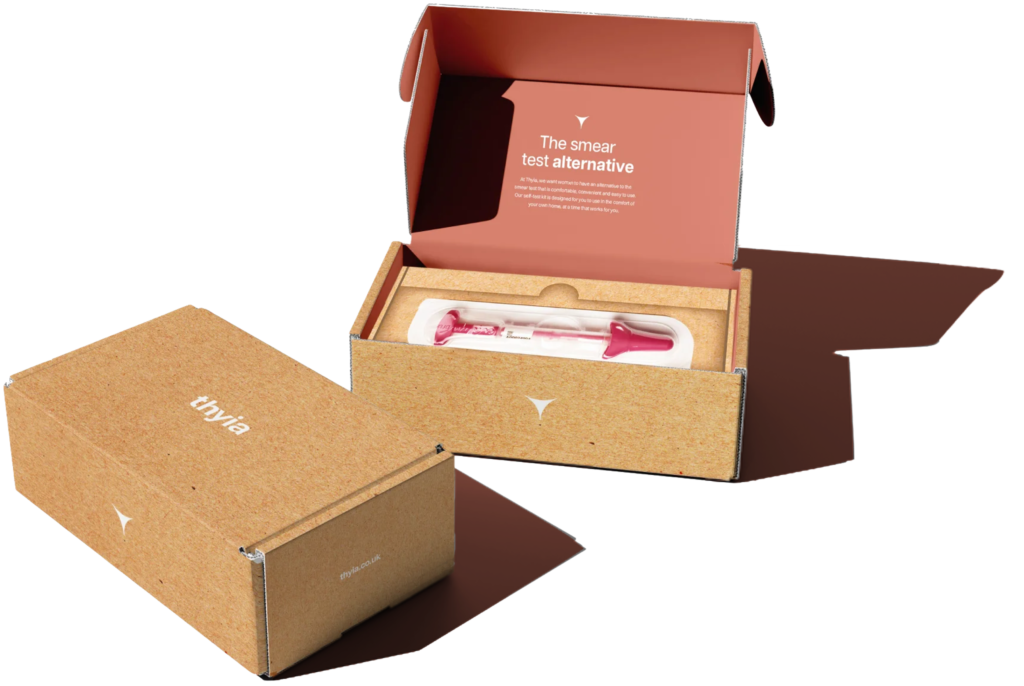Introduction
Cervical cancer is one of the most common cancers among women worldwide. Regular screening with a smear test (also known as Pap test, or cervical screening) is crucial in detecting abnormal cells that may lead to cancer. However, many women find these tests uncomfortable and invasive, leading to low participation rates in screening programs.
Enter Thyia – the new comfortable and convenient alternative to a traditional cervical smear test.

What is Thyia’s, Self-Test?
Thyia’s smear test alternative is an at-home test that allows women to collect their own samples for cervical cancer screening. The test kit comes with a swab and instructions on how to collect the sample.
How does Thyia’s Self-Test work?

Using Thyia’s self-test is simple and straightforward. First, wash your hands and find a comfortable position – either standing with one foot on a stool or sitting on the toilet with your knees apart.
Next, insert the swab into your vagina until it reaches your cervix (the opening of your uterus). Gently rotate the swab 5 times to collect material from your cervix.
Finally, remove the swab and place it in the provided container before sending it off for analysis.
Benefits of using Thyia’s Self-Test Swab
One of the main benefits of using Thyia’s Self-Test Swab is that it allows women to take control of their own health by collecting their own samples for cervical cancer screening.
The test is also less invasive than traditional cervical smears, making it more comfortable for many women.
Additionally, because women can collect their own samples at home, they don’t need to take time off work or arrange childcare in order to attend a clinic appointment.
Comparison with traditional smear tests
Traditional cervical smear tests involve a healthcare professional inserting a speculum into the vagina in order to collect cells from the cervix using a brush or spatula.
This can be uncomfortable for some women and may cause anxiety or embarrassment.
In contrast, Thyia’s Self-Test Swab allows women to collect their own samples in the privacy and comfort of their own homes.
User experiences and feedback
Many women who have used Thyia’s self-test swab report that it was easy to use and much more comfortable than traditional cervical smears.
Some also appreciated being able to take control of their own health by collecting their own samples for screening.
Overall, user feedback has been overwhelmingly positive, with many women saying they would recommend self-tests to their girlfriends.
Conclusion
Thyia’s Self-Test Swab offers a comfortable alternative to traditional cervical smears. By allowing women to collect their own samples at home, this innovative test empowers them to take control of their own health while also increasing participation rates in cervical cancer screening programs.
References
- Rovers Medical Devices describes the Evalyn Brush as “the most reliable self-sampling device for screening for the Human PapillomaVirus (HPV)” 1.
- Qasya Diagnostic Services also describes the Evalyn Brush as “the most reliable self-sampling device for screening for HPV” 2.
- Sentra Diagnostik Dinamika similarly describes the Evalyn Brush as “the most reliable self-sampling device for screening for HPV” 3.
- Rovers Medical Devices states that “The Evalyn Brush is the only self-sampling device that offers built-in features to ensure correct sample taking and to reassure women” 4.



